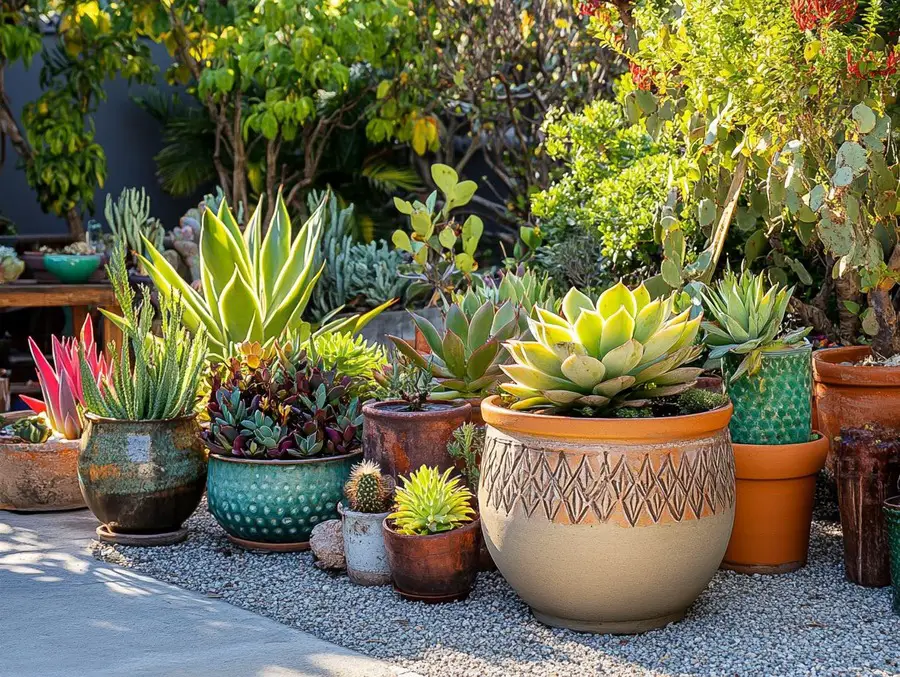We use affiliate links. If you purchase something using one of these links, we may receive compensation or commission.
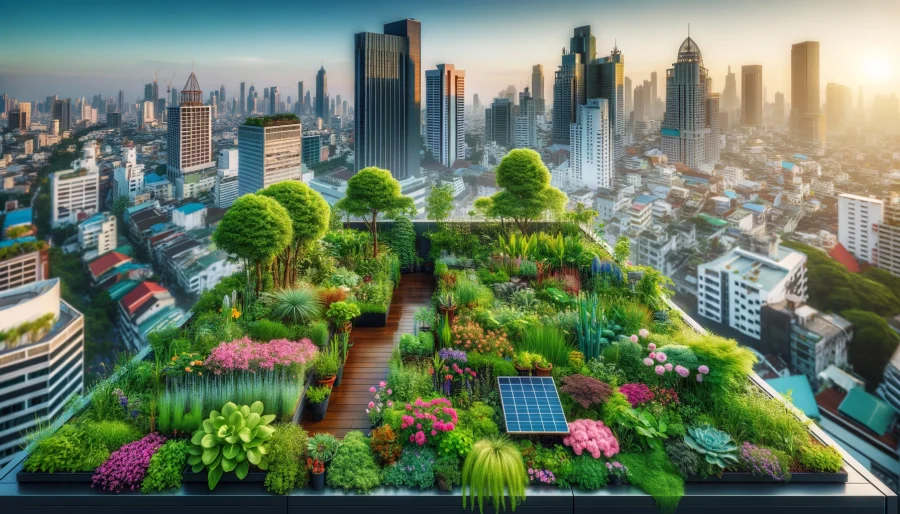
How do rooftop gardens promote sustainability? Discover a green solution for a sustainable future.
Do Rooftop Gardens Promote Sustainability? Key Takeaways:
- Yes, rooftop gardens significantly enhance sustainability by:
- Cooling urban areas
- Improving air quality
- Reducing energy consumption
- Managing stormwater
- Supporting biodiversity
- They transform unused rooftops into productive green spaces, contributing to a healthier, more sustainable urban environment.
Ever wondered how rooftop gardens promote sustainability? In cities filled with concrete and steel, these green oases offer a breath of fresh air, literally.
They cool down urban heat islands, purify the air, and even provide fresh produce.
Join us as we delve into the world of rooftop gardens and uncover their role in fostering a greener, more sustainable urban future.
Do Rooftop Gardens Promote Sustainability?
Rooftop gardens are a growing trend in urban areas, offering a host of benefits for both the environment and communities.
From reducing the urban heat island effect to providing habitat for wildlife, these green spaces play a crucial role in promoting sustainability.
But what exactly are the benefits of rooftop gardens, and what challenges do they face?
In this article, we explore the various ways rooftop gardens contribute to a greener future and how individuals and communities can support these initiatives.
What Are Rooftop Gardens?
Rooftop gardens, also known as green roofs, are vegetated rooftop spaces that offer a myriad of environmental benefits, particularly in urban areas where green spaces are limited.
They serve as a clever solution to combat the urban heat island effect by reducing energy consumption, providing insulation, and minimizing stormwater runoff.
The installation process involves a multi-layered system including a waterproof membrane, drainage layer, growing medium, and plants.
These gardens not only enhance the aesthetics of a building but also promote biodiversity, improve air quality, and act as natural habitats for birds and insects.
How Do Rooftop Gardens Promote Sustainability?
Rooftop gardens play a vital role in promoting sustainability by mitigating the urban heat island effect, improving air quality, reducing energy consumption, and managing stormwater runoff effectively.
One of the key benefits of rooftop gardens is their ability to regulate temperatures in urban areas.
By providing an additional layer of vegetation, they help to cool down buildings, reducing the overall heat island effect prevalent in cities.
This not only creates a more pleasant environment but also decreases the reliance on air conditioning, thereby lowering energy consumption and greenhouse gas emissions.
Reducing the Urban Heat Island Effect
The urban heat island effect, prevalent in cities, can be alleviated by the implementation of rooftop gardens, which help regulate temperatures and support sustainable urban development.
Rooftop gardens play a vital role in combating the urban heat island effect by providing a natural cooling mechanism.
Through the absorption of solar energy and the process of evapotranspiration, these green roofs can significantly reduce the ambient temperature in urban areas.
This cooling effect not only enhances the outdoor comfort for city dwellers but also minimizes the need for energy-intensive air conditioning systems, thereby lowering overall energy consumption.
Urban areas usually experience the urban heat island (UHI) effect, that is, they are significantly warmer than surrounding rural areas. The temperature difference is usually larger at night than during the day,[1] and is most apparent when winds are weak, under block conditions, noticeably during the summer and winter. Wikipedia
Improving Air Quality
Rooftop gardens contribute to enhancing air quality by reducing air pollution, absorbing CO2 emissions, and providing natural insulation that minimizes the need for excessive heating or cooling.
By filtering pollutants through their vegetation, these green spaces act as natural air purifiers, releasing oxygen and absorbing harmful chemicals.
Creating a green buffer against urban air pollution, rooftop gardens serve as urban sanctuaries that mitigate the impacts of vehicle emissions and industry pollutants.
The presence of these green rooftops helps in reducing the urban heat island effect by providing shade and cooling effects, which ultimately contribute to a healthier urban environment.
Their ability to capture CO2 emissions and convert them into oxygen not only benefits the immediate surroundings but also plays a part in combating global climate change.
Reducing Energy Consumption
By providing insulation and promoting energy-efficient practices, rooftop gardens help reduce overall energy consumption, making buildings more sustainable and environmentally friendly.
Rooftop gardens act as natural insulators by creating a protective barrier that helps regulate indoor temperatures, reducing the need for excessive heating or cooling.
This insulation effect can significantly decrease the energy required to maintain a comfortable atmosphere inside buildings.
The presence of green roofs encourages energy-efficient building designs, such as maximizing natural light usage and implementing passive cooling techniques, further lowering energy consumption.
Reducing Stormwater Runoff
Rooftop gardens play a critical role in reducing stormwater runoff by effectively managing rainwater through vegetation, thus minimizing costs associated with drainage systems.
These green roofs act as natural sponges, absorbing rainwater and reducing the volume of runoff flowing into storm drains and waterways.
The vegetation on rooftop gardens helps in slowing down the flow of rainwater, allowing for more infiltration into the soil and less surface runoff.
By doing so, they assist in mitigating the risks of urban flooding and improving overall water quality.
The incorporation of green roofs can significantly lower the expenses related to traditional drainage infrastructure installation and maintenance, making them a cost-effective and environmentally friendly solution for stormwater management.
Providing Habitat for Wildlife
Rooftop gardens create valuable habitats for wildlife, fostering biodiversity and supporting crucial pollinators such as insects and bees in urban environments.
In urban settings, where natural green spaces are limited, rooftop gardens play a vital role in providing sanctuaries for various creatures.
These areas offer food, shelter, and nesting sites for birds, insects, and even small mammals.
By welcoming wildlife into these elevated green spaces, biodiversity is enhanced, contributing to the overall health of the urban ecosystem.
What Are the Benefits of Rooftop Gardens?

The benefits of rooftop gardens extend beyond the environmental realm, encompassing improvements in mental and physical health, enhanced aesthetics, and increased property values.
Roof garden enthusiasts often find solace and tranquility in their green oasis, creating a therapeutic escape from the hustle and bustle of daily life.
Green spaces have been shown to reduce stress levels, enhance mood, and provide a rejuvenating retreat right at home.
The visual appeal of a rooftop garden adds a touch of elegance and charm to any property.
The lush greenery, colorful blooms, and overall design elevate the aesthetics of the entire landscape, making it an inviting and enticing space.
Improving Mental and Physical Health
Rooftop gardens contribute to enhancing mental and physical health by providing green spaces in urban areas that promote relaxation, stress reduction, and physical activity.
These green oases offer a retreat from the hustle and bustle of city life, creating opportunities for people to connect with nature even amid urban landscapes.
Plants in rooftop gardens play a significant role in purifying the air, reducing pollutants, and increasing oxygen levels, thereby improving overall air quality and positively impacting mental health.
Individuals can engage in activities like gardening, yoga, or simply lounging amidst the greenery, all of which contribute to reducing stress levels and promoting a sense of well-being.
Enhancing Aesthetics and Property Value
The aesthetic appeal of rooftop gardens not only enhances the visual landscape but also boosts property values through the installation of green spaces that improve the overall ambiance.
Rooftop gardens play a key role in transforming urban environments into vibrant, green spaces that offer a sanctuary from the hustle and bustle of city life.
By adding elements of nature to usually concrete-laden rooftops, these green oases can significantly contribute to the aesthetic character of a property.
Green roofs not only provide a beautiful setting but also attract wildlife, offer relaxation spots, and create a sense of tranquility amidst the urban chaos.
Increasing Food Production
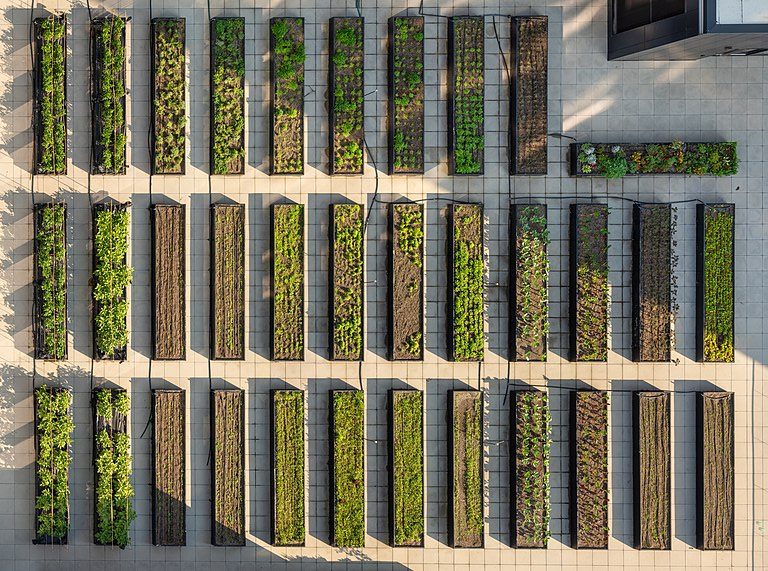 Rhododendrites, CC BY-SA 4.0, via Wikimedia Commons
Rhododendrites, CC BY-SA 4.0, via Wikimedia Commons
Rooftop gardens contribute to increasing food production in urban areas, promoting sustainability, and reducing costs associated with the transportation and storage of produce.
Rooftop gardens play a crucial role in urban agriculture by utilizing underutilized space.
By transforming rooftops into green spaces. Using these green roofs in urban agriculture provides a sustainable solution for producing fresh, local food right where it is needed most.
This not only reduces the carbon footprint associated with transporting food from rural areas but also cuts down on storage costs, as produce can be harvested and used immediately.
The close proximity to consumers ensures a direct supply chain, promoting community involvement and supporting a more robust local food economy.
What Are the Challenges of Implementing Rooftop Gardens?
While rooftop gardens offer numerous benefits, challenges such as structural limitations, maintenance requirements, and initial costs present obstacles to their widespread implementation.
Structural constraints in buildings often restrict the weight-bearing capacity of roofs, necessitating costly reinforcements to support the additional weight of the garden infrastructure.
The meticulous maintenance needed for rooftop gardens, including irrigation, pruning, and pest control, adds complexity and ongoing expenses.
The high initial cost of establishing green roofs can deter property owners, especially considering the long-term investments required to ensure the garden’s health and sustainability.
Structural Limitations
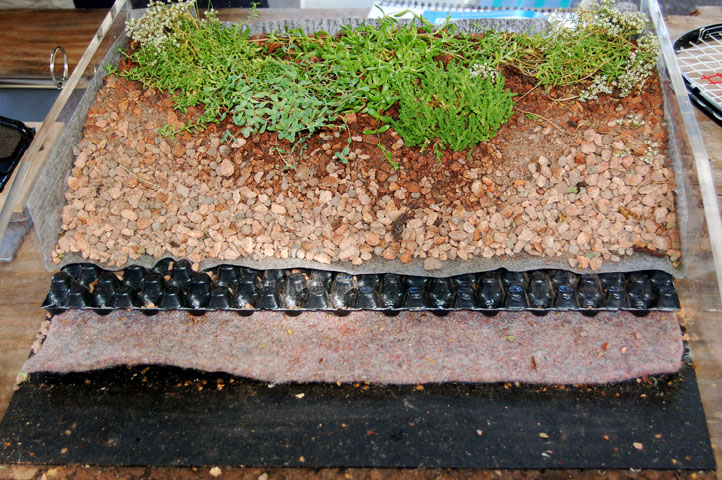
Structural limitations, such as waterproofing requirements and temperature variations, can pose challenges during the installation and maintenance of rooftop gardens.
One of the primary concerns in rooftop garden installations is the necessity for effective waterproofing to prevent water leakage into the building structure.
Without proper waterproofing, water seepage can occur, leading to structural damage and mold growth.
Temperature fluctuations on rooftops contribute to the complexity of maintaining a stable environment for plants, as extreme heat or cold can impact plant health.
The installation process of rooftop gardens involves various technical challenges, including the weight-bearing capacity of the roof, accessibility for maintenance, and integration of irrigation systems.
Maintenance and Irrigation
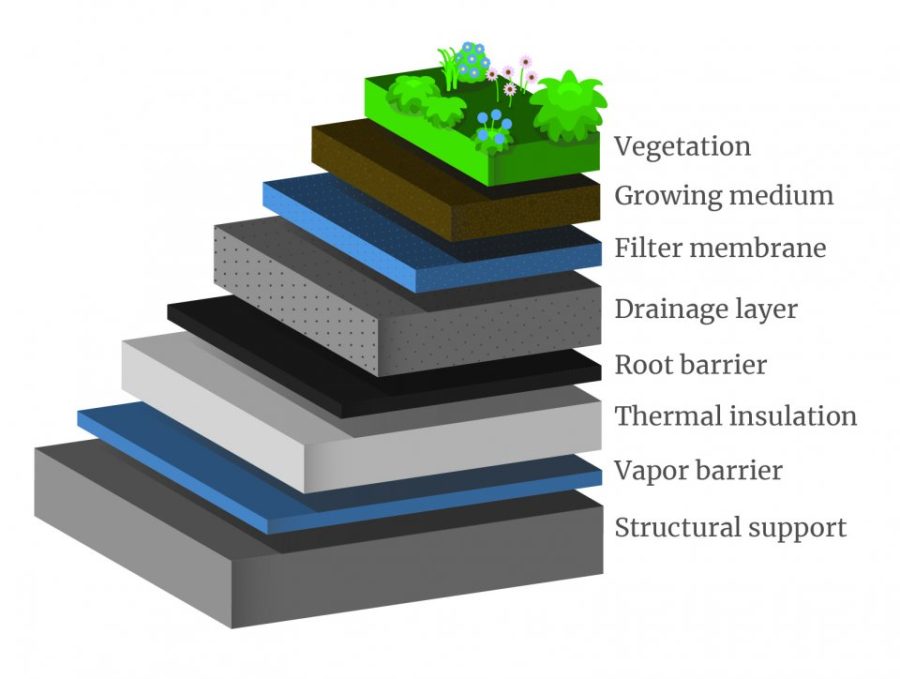
The ongoing maintenance and irrigation of rooftop gardens, involving plant care and associated costs, are essential aspects that require attention to ensure the sustainability of green roof installations.
Proper plant care is crucial in rooftop gardens, as the limited space and unique environmental conditions require specific attention to the health and growth of the vegetation.
Regular pruning, fertilizing, and pest control measures are necessary to maintain the lush greenery on rooftops.
In terms of irrigation, the water needs of plants in rooftop gardens are higher than ground-level plants due to exposure to sunlight and wind.
Implementing efficient irrigation systems like drip irrigation can help regulate water usage while promoting plant growth.
The financial implications of sustaining green spaces on rooftops can be significant, with ongoing costs related to plant care, irrigation, and potential repairs.
The environmental benefits and aesthetic appeal that rooftop gardens offer make these investments worthwhile in the long run.
Cost and Accessibility
The initial costs, ongoing maintenance expenses, and accessibility challenges associated with rooftop gardens can deter widespread adoption despite their long-term benefits in reducing energy costs and enhancing sustainability.
When considering the financial side of rooftop gardens, the initial investment for setting up green roofs involves expenses like structural reinforcement, waterproofing, insulation, and plant installation, which can be significant depending on the size and complexity of the project.
These costs may vary based on factors such as geographic location, building structure, and desired design elements.
The continuous maintenance requirements of rooftop gardens, including irrigation systems, fertilizers, pest control, and plant replacements, add to the overall expenditure.
These ongoing costs contribute to the overall financial burden associated with maintaining green roofs.
Accessibility issues also play a crucial role in the feasibility of rooftop gardens.
Limited access to maintenance personnel and equipment can increase maintenance costs and create logistical challenges that affect the long-term sustainability of green spaces on rooftops.
How Can Individuals and Communities Support Rooftop Gardens?
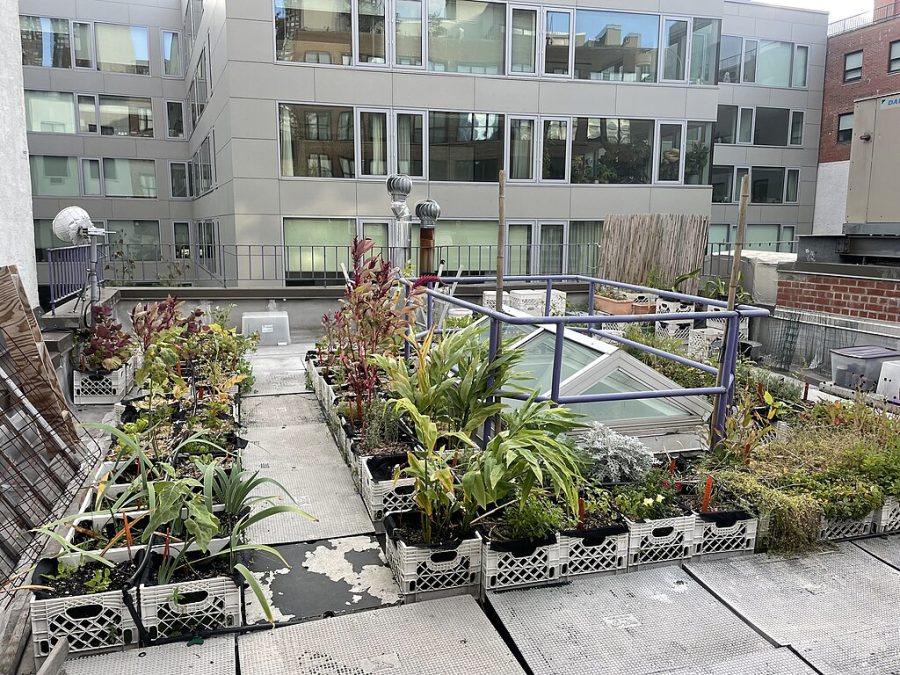
Individuals and communities can actively support rooftop gardens by advocating for green building policies, volunteering or donating to garden projects, and initiating rooftop gardens at home to promote sustainable urban environments.
Encouraging local legislation that encourages or mandates green elements in building design can create a positive impact on rooftop garden proliferation.
By vocalizing the importance of eco-conscious constructions to policymakers, communities can firmly lay the groundwork for sustainable practices.
Volunteering time and resources to existing rooftop garden initiatives not only provides immediate help but also fosters a sense of collective ownership and responsibility for these green spaces.
Actively engaging in community garden projects can inspire others to join the movement towards more environmentally friendly urban landscapes.
For those looking to make a direct impact, setting up a personal rooftop garden can serve as a tangible example of sustainability in action.
By growing plants, fruits, and vegetables at home, individuals can decrease their carbon footprint and contribute to a greener environment in a meaningful way.
Advocating for Green Building Policies
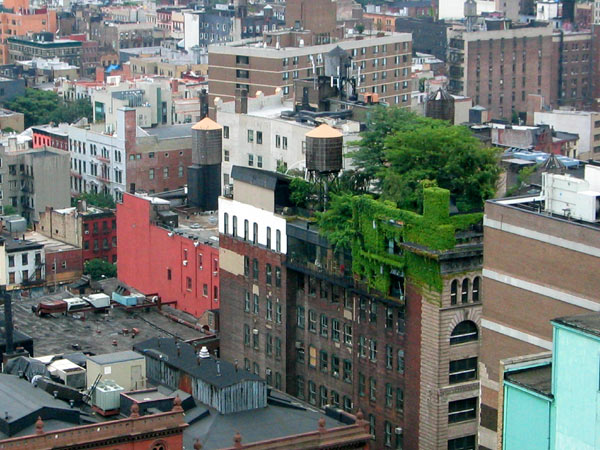
Advocating for green building policies is essential to foster sustainability, support urban growth, and promote the integration of green spaces like rooftop gardens in cities.
Green building policies play a crucial role in mitigating environmental impacts, reducing energy consumption, and minimizing carbon footprints in densely populated areas.
By emphasizing sustainable construction practices, these policies can help address the challenges posed by rapid urbanization and ensure that cities are developed in a more eco-friendly manner.
The incorporation of rooftop gardens not only enhances the aesthetic appeal of urban landscapes but also provides numerous environmental benefits such as improving air quality, reducing the heat island effect, and promoting biodiversity.
Advocating for green building policies that mandate the inclusion of green spaces in city planning can significantly contribute to creating healthier and more sustainable urban environments for current and future generations.
Volunteering or Donating to Rooftop Garden Projects
Engaging in volunteering or donating to rooftop garden projects, such as pilot programs, is a direct way to support sustainability initiatives and foster the growth of green spaces in urban environments.
By actively participating in these initiatives, individuals contribute to the development of ecological hubs that boost biodiversity, air quality, and overall urban aesthetics.
Volunteering provides a hands-on opportunity to engage with nature, learn about sustainable practices, and create a positive impact in local communities.
Through pilot programs, volunteers can play a vital role in testing innovative ideas that could shape future city planning strategies and inspire other regions to adopt similar eco-friendly projects.
Starting a Rooftop Garden at Home

Creating a rooftop garden at home provides individuals with the opportunity to cultivate green spaces inspired by initiatives in countries like Germany and New York City, fostering sustainability on a local scale.
By embracing the concept of a home garden, gardening enthusiasts can transform their roofs into flourishing urban oases.
Drawing inspiration from the lush green rooftops in Germany, where the practice is widely adopted to combat urban heat and promote biodiversity, and the bustling metropolis of New York City, with its innovative rooftop gardens atop skyscrapers, individuals can embark on a journey towards a greener and more sustainable lifestyle.
Implementing a rooftop garden offers a myriad of benefits, from reducing energy consumption and carbon footprint to providing a habitat for beneficial insects and birds, contributing to a healthier environment overall.
Rooftop Gardens Frequently Asked Questions
Q. How do rooftop gardens promote sustainability?
A. Rooftop gardens promote sustainability in several ways:
- They help reduce the urban heat island effect by providing shade and absorbing heat from the sun, reducing the overall energy consumption of buildings.
- They improve air quality by capturing carbon dioxide and other pollutants, as well as producing oxygen.
- They reduce stormwater runoff by absorbing rainwater, which helps prevent flooding and the overflow of sewage systems.
- They provide insulation for buildings, reducing the need for heating and cooling and thus lowering energy consumption.
- They can be used for growing food, reducing the distance between food production and consumption and promoting sustainable, locally-sourced food systems.
- They create habitats for birds, bees, and other pollinators, helping to maintain biodiversity in urban areas.
Q. What are the environmental benefits of rooftop gardens?
A. Rooftop gardens have several environmental benefits, including:
- Reducing the urban heat island effect and mitigating the effects of climate change.
- Improving air quality by filtering pollutants and producing oxygen.
- Reducing stormwater runoff and preventing flooding and sewage overflows.
- Providing insulation for buildings, reducing energy consumption and greenhouse gas emissions.
- Creating habitats for wildlife and promoting biodiversity in cities.
Q. Do rooftop gardens save energy?
A. Yes, rooftop gardens are an effective way to save energy. They provide insulation for buildings, reducing the need for heating and cooling and thus lowering energy consumption.
They also help reduce the urban heat island effect, which can lead to higher energy demands in cities.
Q. Can rooftop gardens be used for growing food?
A. Yes, rooftop gardens can be used for growing food. They can provide a sustainable and locally sourced food source for urban residents, reducing the distance between food production and consumption. This also promotes food security and resilience in cities.
Q. How do rooftop gardens benefit local communities?
A. Rooftop gardens provide numerous benefits for local communities, including:
- Improving air quality and reducing pollution, creating a healthier environment for residents.
- Providing a source of fresh, locally-grown food, promoting food security and community resilience.
- Creating green spaces in urban areas can have a positive impact on mental health and well-being.
- Reducing energy consumption and greenhouse gas emissions, contributing to a more sustainable and livable city.
Q. Are rooftop gardens expensive to install and maintain?
A. The cost of installing and maintaining a rooftop garden can vary depending on the size and complexity of the garden.
However, with proper planning and maintenance, a rooftop garden can provide long-term benefits and cost savings.
Additionally, many cities offer incentives and grants for the installation of rooftop gardens, making them more accessible and affordable for residents and businesses.
Conclusion: The Impact of Rooftop Gardens on Sustainability
Rooftop gardens, or green roofs, have emerged as innovative solutions to the challenges of urbanization, offering numerous benefits for the environment, communities, and individuals.
By transforming barren rooftops into vibrant green spaces, these gardens contribute significantly to creating sustainable urban environments.
Below, we explore the key ways in which rooftop gardens foster sustainability and the steps individuals and communities can take to support this green initiative.
Mitigating Urban Heat
Rooftop gardens are at the forefront of combating the urban heat island effect. By covering roofs with vegetation, they absorb solar radiation and cool the surrounding air through the process of evapotranspiration.
This natural cooling effect reduces the need for air conditioning, leading to lower energy consumption and greenhouse gas emissions.
Enhancing Air Quality and Biodiversity
Green roofs play a crucial role in improving air quality by filtering pollutants and producing oxygen.
They also offer habitats for a variety of species, from birds to bees, enhancing urban biodiversity and creating ecosystems that support urban wildlife.
Stormwater Management and Energy Efficiency
By absorbing rainwater, rooftop gardens reduce stormwater runoff and the risk of urban flooding.
They also provide insulation for buildings, decreasing the need for heating in winter and cooling in summer, which, in turn, reduces overall energy use.
Community and Mental Health Benefits
Beyond the environmental impact of green roofs and rooftop gardens offer spaces for community engagement and can improve mental health by providing serene green spaces in the concrete jungle.
They encourage local food production, fostering a sense of community and connection to nature.
Supporting Rooftop Gardens
Individuals and communities can support rooftop gardens by advocating for green building policies, volunteering in garden projects, and considering the implementation of their own rooftop gardens.
Learn more: Rooftop Gardening for Beginners Easy Tips and Tricks
Through collective efforts, the vision of greener, more sustainable urban landscapes can become a reality.
Related Content
Visit my Amazon Influencer Page for videos and gardening products Grow Your Own Garden

